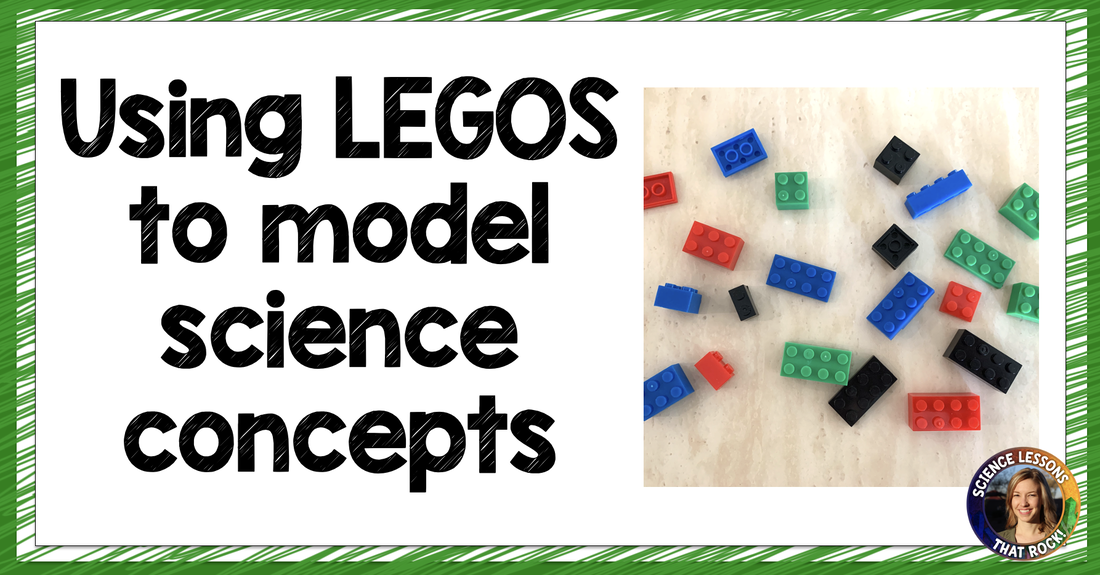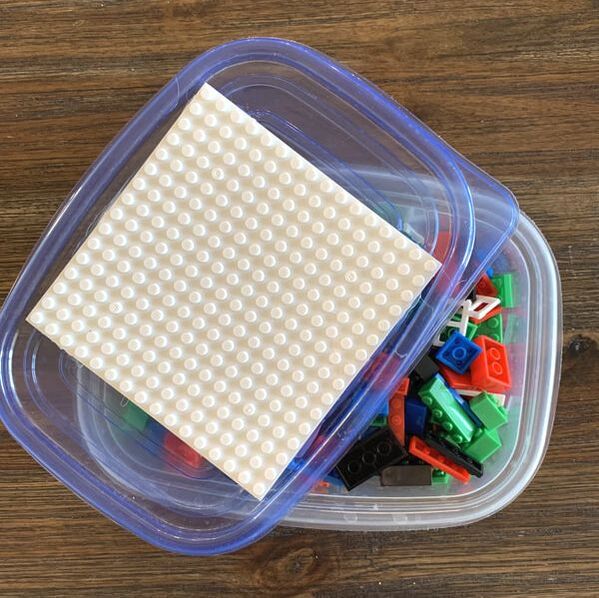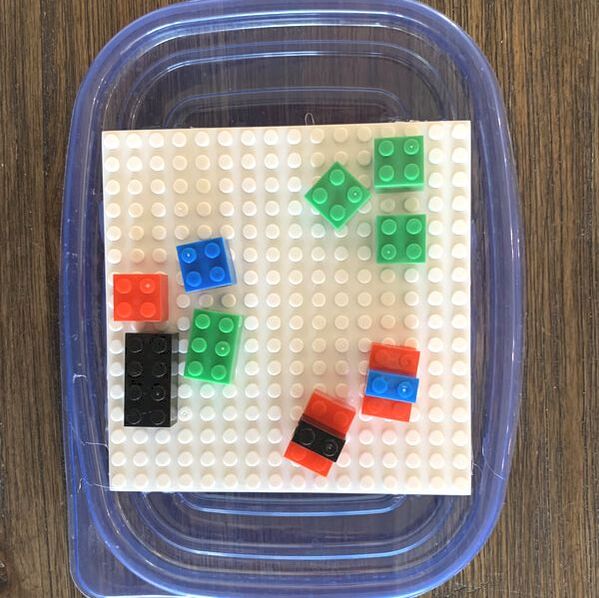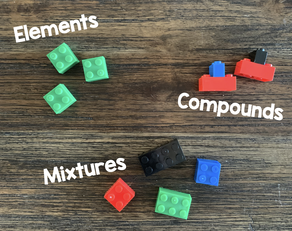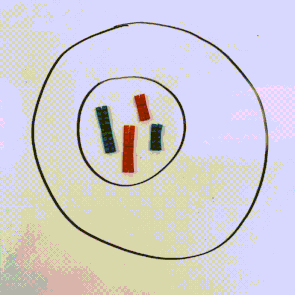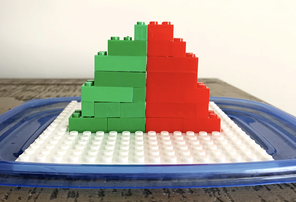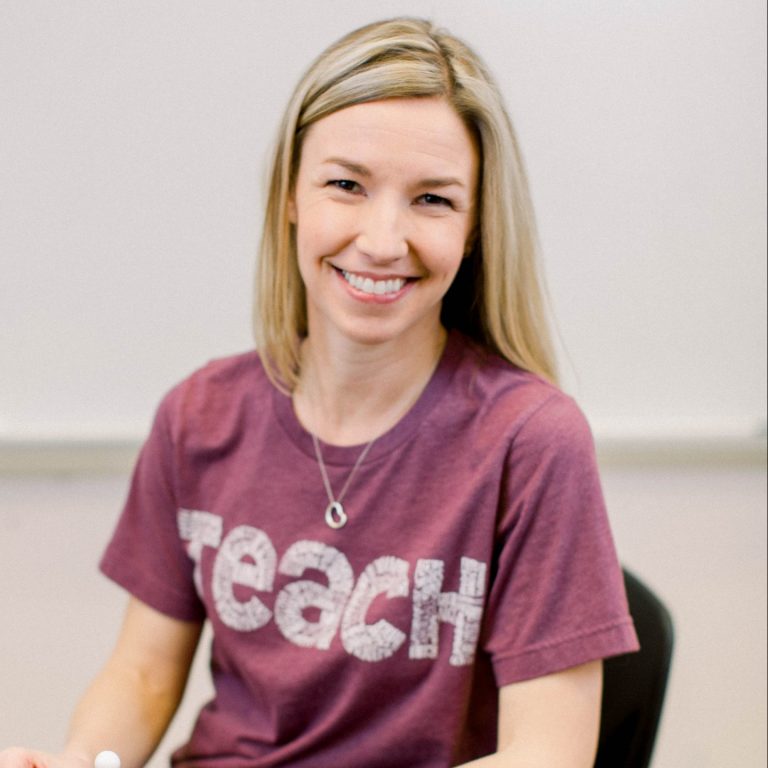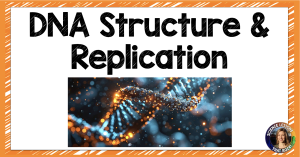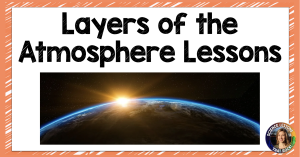Legos can be used in a lot of different ways to demonstrate science concepts. You may be thinking that Legos are expensive, but that’s only if you buy Lego brand or special kits. They sell off-brand Legos at Dollar Tree, and you can also find used Legos at children’s stores. (You can also bug your friends with older kids to donate their old sets to your class).
Once you have a collection of Legos to use, divvy them up into containers. Again, hit up the dollar store. Purchase enough Tupperware containers to have one kit per group (I tend to break my class into 8 groups, so I have 8 kits). Dollar tree also sells the flat Lego baseplate you can build on. I hot glued them onto the top of the Tupperware so students can build directly on the container and hopefully pieces don’t get lost. They also stack easily in the cupboard this way.
Here are some ways you can use Legos to model science concepts:
2. CHEMICAL REACTIONS: Teaching chemical reactions? Use different colored Legos to represent different elements. For example, blue is oxygen, white is hydrogen, etc. Have students build molecules and show a chemical reaction. Are the number of atoms on the product side of the reaction the same as the number of atoms on the reactant side?
4. PRECIPITATION TOWERS: This NASA website uses Legos to model weather data. (Note: This specific lesson is for younger grades, but could be modified for middle school).
8. TROPHIC PYRAMIDS: Provide students with a food chain, and have them create a pyramid of numbers and a pyramid of energy or biomass for that particular food chain. A great way to visualize the different types of pyramids!
10. PLANET SIZE AND SCALE: Provide students with data on the size of the planets in our solar system. Have them create a scaled model of the planets- a great way to sneak in some dimensional analysis!
12. K&P ENERGY: If you have wheels and axles in your Lego tub, have students build Lego cars and measure the amount of kinetic and potential energy they have as they roll down ramps.
Rock on,

